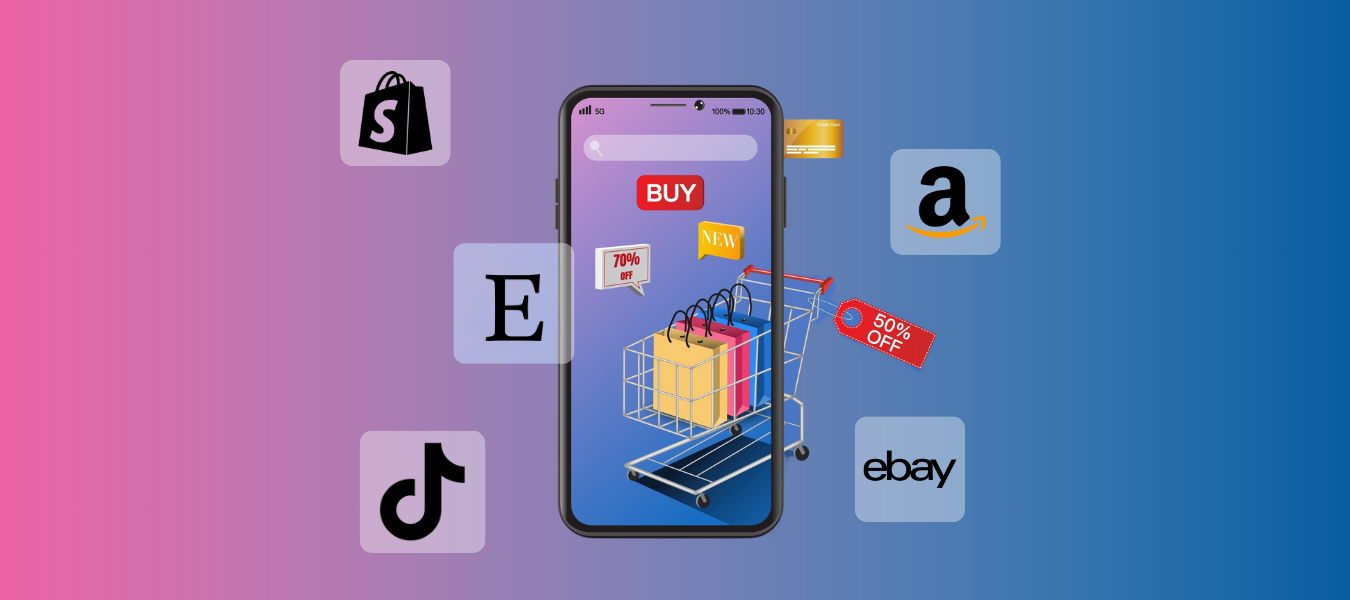



Dropshipping has opened the door for many aspiring entrepreneurs to build their eCommerce businesses with minimal upfront costs. However, Amazon dropshipping is a different game altogether, with strict rules and potential risks that every seller should know about.
In this article, we’ll explore how Amazon dropshipping works, the potential challenges you might face, and introduce an alternative approach that helps sellers leverage similar product access in a more compliant way.
For those new to the dropshipping model, it’s important to fully understand how this business model functions and what it takes to succeed. Be sure to check out our comprehensive guide on What is Dropshipping and How Does It Work for an in-depth look at the basics of dropshipping, the benefits, and the pitfalls involved in this business model.
Amazon dropshipping refers to selling products on Amazon’s marketplace without holding any inventory. Instead of stocking goods, sellers rely on third-party suppliers to fulfill the orders. The seller lists products in their Amazon store, and when a customer makes a purchase, the seller forwards the order to their supplier, who ships it directly to the buyer.
While this business model can seem like a fast track to profits, there are some essential rules that sellers must follow. Amazon has strict policies that can significantly impact how you operate a dropshipping business.
Here’s a brief look at how Amazon dropshipping generally functions:
Listing Products: A seller lists products on Amazon but doesn’t stock any inventory.
Order Fulfillment: When a customer places an order, the seller forwards the purchase to a third-party supplier to fulfill it.
Shipping: The supplier then ships the product directly to the customer on behalf of the Amazon seller.
While this sounds simple, Amazon’s dropshipping policy adds a layer of complexity. Sellers must follow specific guidelines to remain in good standing with Amazon’s terms.
Amazon allows dropshipping, but only if done correctly. To ensure compliance with the platform’s policies, sellers need to pay attention to a few key rules:
By maintaining control over the fulfillment process and ensuring that your suppliers comply with Amazon’s rules, sellers can run a dropshipping business successfully on the platform. However, there are challenges that can arise for those new to the dropshipping game.
Even when sellers follow Amazon’s policies, certain factors make dropshipping on the platform more complex than on other marketplaces. Let’s look at some common obstacles sellers face:
One of the most significant risks is having your Amazon seller account suspended or banned. Sellers who violate Amazon’s strict policies by sourcing from other retailers or abusing Prime memberships often find themselves facing suspensions. Account suspensions can be difficult to reverse, and many sellers lose their accounts permanently after repeated violations.
2. Brand Restrictions and Authorized Resellers
Another common challenge in Amazon dropshipping is navigating brand restrictions. Many brands have strict policies about who can sell their products, often limiting distribution to authorized resellers or specific marketplaces. Selling a restricted brand without permission can result in product listings being taken down, account warnings, or even suspension if Amazon flags the seller as unauthorized.
Researching a brand’s resale policies or reaching out to suppliers for clarification can help sellers avoid potential issues, maintain compliance, and build a reputation as a trustworthy Amazon seller.
Some sellers attempt to use Amazon Prime to ship items to their customers as a way to take advantage of Prime’s fast shipping. This is strictly prohibited, as Prime is designed for personal use, not for fulfilling business orders. Abusing Prime for dropshipping purposes can lead to account termination and a loss of access to the platform entirely.
Since Amazon requires sellers to provide valid tracking numbers, many dropshippers who source from other retailers try to work around this by using invalid or fake tracking numbers. This practice is highly risky and can result in complaints, negative feedback, and account penalties.
When you’re relying on a third-party supplier to fulfill your orders, shipping delays or errors can occur. Amazon places a high value on timely shipping, and if your supplier doesn’t meet Amazon’s shipping expectations, you could face penalties or negative feedback from customers.
The cost of dropshipping on Amazon varies based on the product category, with referral fees ranging mostly from 8% to 15%. Categories like electronics typically have lower fees, while beauty and home goods tend to be on the higher end. There’s also a minimum referral fee of $0.30 per item, and you’ll need to choose between the Individual plan ($0.99 per sale) or the Professional plan ($39.99/month).
To get a more detailed breakdown of Amazon’s fees and how they compare to other marketplaces like eBay and Etsy, check out our full guide on Marketplace Fees.
For some sellers, Amazon dropshipping can be a viable business model — especially for those who can find reliable suppliers and navigate Amazon’s rules carefully. It’s important to ensure your suppliers can meet Amazon’s strict standards, including providing valid tracking information, fast shipping, and accurate product descriptions.
However, for sellers looking to explore other options, there are alternative platforms that provide similar benefits, but with fewer risks and more control over the dropshipping process.
For sellers who want to sidestep the challenges and complexities of Amazon dropshipping, Mysellerhub offers a powerful, compliant solution — alongside its partner platform, Onlihub, which is part of the same team’s projects.
We understand the importance of hassle-free dropshipping. Sellers who join Mysellerhub automatically gain access to Onlihub, our integrated partner platform, offering an expanded catalog of products from trusted suppliers. This collaboration allows you to tap into a wider range of products without dealing with inventory or sourcing from retail competitors.
Instead of navigating the risks of Amazon dropshipping, Mysellerhub allows sellers to focus on growing their business without the fear of violating policies or facing account suspensions. With real-time inventory updates, valid tracking numbers, and reliable fulfillment, it’s easier to scale your dropshipping business the right way.
Is Amazon Dropshipping Profitable in 2024?
Yes, Amazon dropshipping can still be profitable if you choose the right products and ensure compliance with Amazon’s policies. However, profit margins may be slimmer due to fees and competition.
No, using Amazon Prime for business orders is against Amazon’s policies and can lead to account suspension.
Violating Amazon’s dropshipping policies can result in account suspension or even a permanent ban from the platform.
Mysellerhub provides a compliant alternative with access to high-demand products, valid tracking, and fast shipping, helping sellers avoid the risks of Amazon dropshipping.
If you’re considering Amazon dropshipping, it’s important to weigh the risks carefully. Instead of navigating tricky policies and compliance challenges, why not opt for a solution that simplifies everything? Mysellerhub gives you access to reliable suppliers and a catalog of high-demand products. With valid tracking, fast shipping, and competitive pricing, you can build a successful store without the stress. Stay focused on increasing your income while Mysellerhub handles the complexities of dropshipping.
Ready to start? Sign up with Mysellerhub today and explore how you can build a solid dropshipping business with ease!





